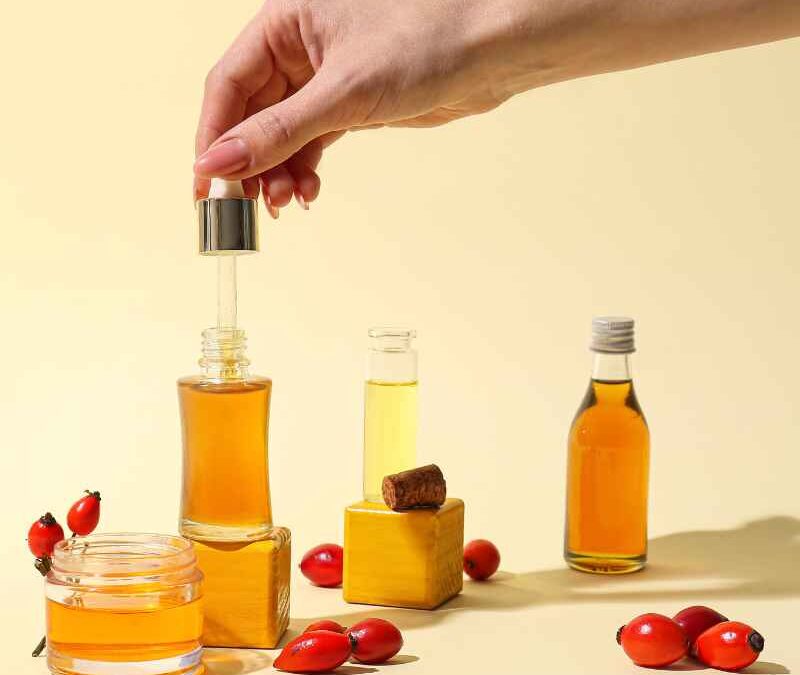The Ultimate Guide to Choosing the Best Carrier Oil for Perfume
Welcome to our comprehensive guide on choosing the best carrier oil for your DIY perfume creations! Perfumes have the power to captivate our senses and leave a lasting impression. But did you know that behind every great perfume is a carefully selected carrier oil? In this article, we’ll explore the world of carrier oils, and their importance in perfumery, and provide you with some DIY perfume recipes made with essential oils. Let’s dive in!
What are Carrier Oils?
Carrier oils are neutral, odorless oils that serve as the base for perfume ingredients. They help dilute and carry the fragrance, ensuring its longevity and enhancing its scent. Here are the key points about carrier oils:
- Definition: Carrier oils are non-volatile oils derived from plants, nuts, or seeds.
- Role in Perfumery: They act as a medium for blending and dispersing essential oils and other aromatic compounds.
- Common Types: Some commonly used carrier oils in perfumery include sweet almond oil, jojoba oil, fractionated coconut oil, and grapeseed oil.
Factors to Consider When Choosing a Carrier Oil
When selecting a carrier oil for your perfume, there are a few important factors to consider. Let’s take a look at each one:
Scent Neutrality
To allow the fragrance of your perfume to shine, it’s essential to choose a carrier oil with a neutral scent. Here are a few carrier oils known for their scent neutrality:
- Sweet Almond Oil: This light and easily absorbed oil is valued for its mild, slightly sweet aroma.
- Jojoba Oil: Known for its similarity to the skin’s natural sebum, jojoba oil has a faint, nutty scent.
- Fractionated Coconut Oil: This odorless and lightweight oil is a popular choice due to its long shelf life and stability.
- Grapeseed Oil: With a light, virtually odorless profile, grapeseed oil is ideal for allowing the perfume’s fragrance to take center stage.
Absorption Rate
The absorption rate of carrier oil affects the longevity of your perfume. Here’s what you need to know:
- Fast Absorption: Carrier oils like jojoba oil and fractionated coconut oil have a faster absorption rate, resulting in a lighter and shorter-lasting scent.
- Slow Absorption: On the other hand, carrier oils such as sweet almond oil and grapeseed oil have a slower absorption rate, providing a longer-lasting fragrance.
Shelf Life
Consider the shelf life of the carrier oil to ensure the longevity and quality of your perfume:
- Long Shelf Life: Jojoba oil and fractionated coconut oil have a longer shelf life compared to oils like sweet almond oil and grapeseed oil.
Skin Compatibility
To avoid any potential skin irritations, it’s important to choose carrier oils that are suitable for your skin type:
- All Skin Types: Jojoba oil is highly compatible with all skin types, making it a safe choice.
- Sensitive Skin: Sweet almond oil and grapeseed oil are gentle options that are less likely to cause irritation.
Best Carrier Oils For Perfume Making
Now that you understand the factors to consider, let’s explore some of the best carrier oils for your DIY perfume creations:
Sweet Almond Oil
- Characteristics: Light, slightly sweet aroma; easily absorbed by the skin.
- Benefits: Moisturizes the skin, and promotes a soft and smooth texture.
- Why It’s Popular: Its neutral scent profile and skin-friendly properties make it a widely used carrier oil in perfumery.
Jojoba Oil
- Characteristics: Similar to the skin’s natural sebum; faint, nutty scent.
- Benefits: Balances oil production, suitable for oily and acne-prone skin.
- Why It’s Favored: Jojoba oil’s compatibility with all skin types, its infinite shelf life, and its ability to carry fragrance well make it a popular choice in perfumery.
Fractionated Coconut Oil
- Characteristics: Odorless, lightweight; liquid at room temperature.
- Benefits: Long shelf life, does not stain clothing.
- Why It’s Commonly Used: Fractionated coconut oil’s stability, light texture, and lack of scent make it an excellent carrier oil for perfume making.
Grapeseed Oil
- Characteristics: Light, virtually odorless.
- Benefits: Moisturizes the skin without leaving a greasy residue.
- Why It’s Suitable: Grapeseed oil’s neutral scent and compatibility with various skin types make it an ideal carrier oil for perfumes.
Blending Carrier Oils for Perfumes
Blending carrier oils allows you to create unique fragrance combinations. Here are some guidelines for effective blending:
- Experiment: Mix different carrier oils in varying proportions to find the perfect blend that suits your desired fragrance.
- Scent Profiles: Consider the characteristics of each carrier oil to create balanced and harmonious scent profiles.
- Example Blends: Try blending sweet almond oil with jojoba oil for a well-rounded fragrance or combine fractionated coconut oil with grapeseed oil for a lighter scent.
DIY Perfume Recipes Made with Essential Oils
Now, let’s dive into some simple DIY perfume recipes using essential oils and carrier oils:
Recipe 1: Floral Delight
- 10 drops of rose essential oil
- 5 drops of lavender essential oil
- 2 tablespoons of sweet almond oil
Combine the essential oils and sweet almond oil in a small glass bottle. Gently shake to blend the oils. Allow the mixture to sit for a few days to let the scents meld together before using.
Recipe 2: Citrus Burst
- 10 drops of bergamot essential oil
- 5 drops of grapefruit essential oil
- 2 tablespoons of jojoba oil
Mix the essential oils and jojoba oil in a glass bottle. Shake gently to blend. Let the perfume sit for a day or two to develop its full fragrance before applying.
Recipe 3: Woodsy Elegance
- 8 drops of cedarwood essential oil
- 5 drops of sandalwood essential oil
- 3 drops of bergamot essential oil
- 2 tablespoons of fractionated coconut oil
Combine the essential oils and fractionated coconut oil in a glass bottle. Gently swirl the mixture to blend the oils together. Allow the perfume to sit for a day or two before using it to allow the scents to meld and develop. This woodsy fragrance is perfect for those who appreciate a sophisticated and grounding aroma.
Recipe 4: Fresh Citrus Twist
- 10 drops of lemon essential oil
- 5 drops of orange essential oil
- 3 drops of peppermint essential oil
- 2 tablespoons of grapeseed oil
Mix the essential oils and grapeseed oil in a small glass bottle. Shake gently to combine the oils thoroughly. Let the perfume sit for a few hours to let the fragrances blend before applying. This refreshing citrus scent with a hint of cool mint is ideal for those who enjoy a zesty and invigorating fragrance.
Floris Rose Geranium Perfume Recipe
Remember, you can always adjust the number of essential oil drops based on your preference for a stronger or more subtle scent. Have fun experimenting and creating your own unique perfume blends!
Both spray bottles and roller bottles can work well for these perfume recipes. It ultimately depends on your personal preference and how you prefer to apply your perfume. Here are some considerations for each option:
Spray Bottle:
- Spray bottles are great for creating a fine mist of fragrance that can be easily dispersed over a larger area.
- They provide a more even distribution of the perfume on the skin or clothing.
- Suitable for those who prefer a quick and convenient application.
Roller Bottle:
- Roller bottles are ideal for targeted and precise application.
- They allow you to apply the perfume directly to specific pulse points or areas of your choice.
- Roller bottles are convenient for carrying in a purse or pocket for on-the-go touch-ups.
For the recipe quantities provided earlier, you can adjust them accordingly based on the size of the bottle you intend to use. If you’re using a 10 ml roller bottle, for example, you can halve the recipe quantities. For a 30 ml spray bottle, you can double the recipe quantities.
Remember to always test the compatibility of the essential oils with the specific bottle material you choose to ensure they are compatible and do not cause any degradation or leakage.
Ultimately, whether you choose a spray bottle or roller bottle, the important thing is to enjoy the process of creating your own unique fragrances and find the application method that suits your preferences best.
Tips for Using Carrier Oils in Perfume Making
To make the most of your carrier oils and ensure the longevity of your perfume, keep the following tips in mind:
Storage and Preservation
- Store carrier oils in a cool, dark place to preserve their quality.
- Keep them tightly sealed to prevent exposure to air and light, which can degrade the oils.
- Avoid storing carrier oils near heat sources to maintain their stability.
Testing and Dilution
- Before applying a perfume made with carrier oils, conduct a patch test on a small area of the skin to check for any adverse reactions.
- Dilute essential oils properly with carrier oils to ensure they are safe for use on the skin.
Conclusion
Choosing the best carrier oil for your perfume is an essential step in creating a fragrance that delights the senses. We’ve explored the factors to consider, highlighted some top carrier oils, and even provided you with some DIY perfume recipes to get started. Remember, perfume-making is an art, so feel free to experiment and find the combinations that speak to you. Enjoy the journey of crafting unique scents that leave a lasting impression!
Have fun creating a life that naturally makes scents!
Read Next:
Best Carrier Oil For Reed Diffuser
Essential oil Blends For Seduction



